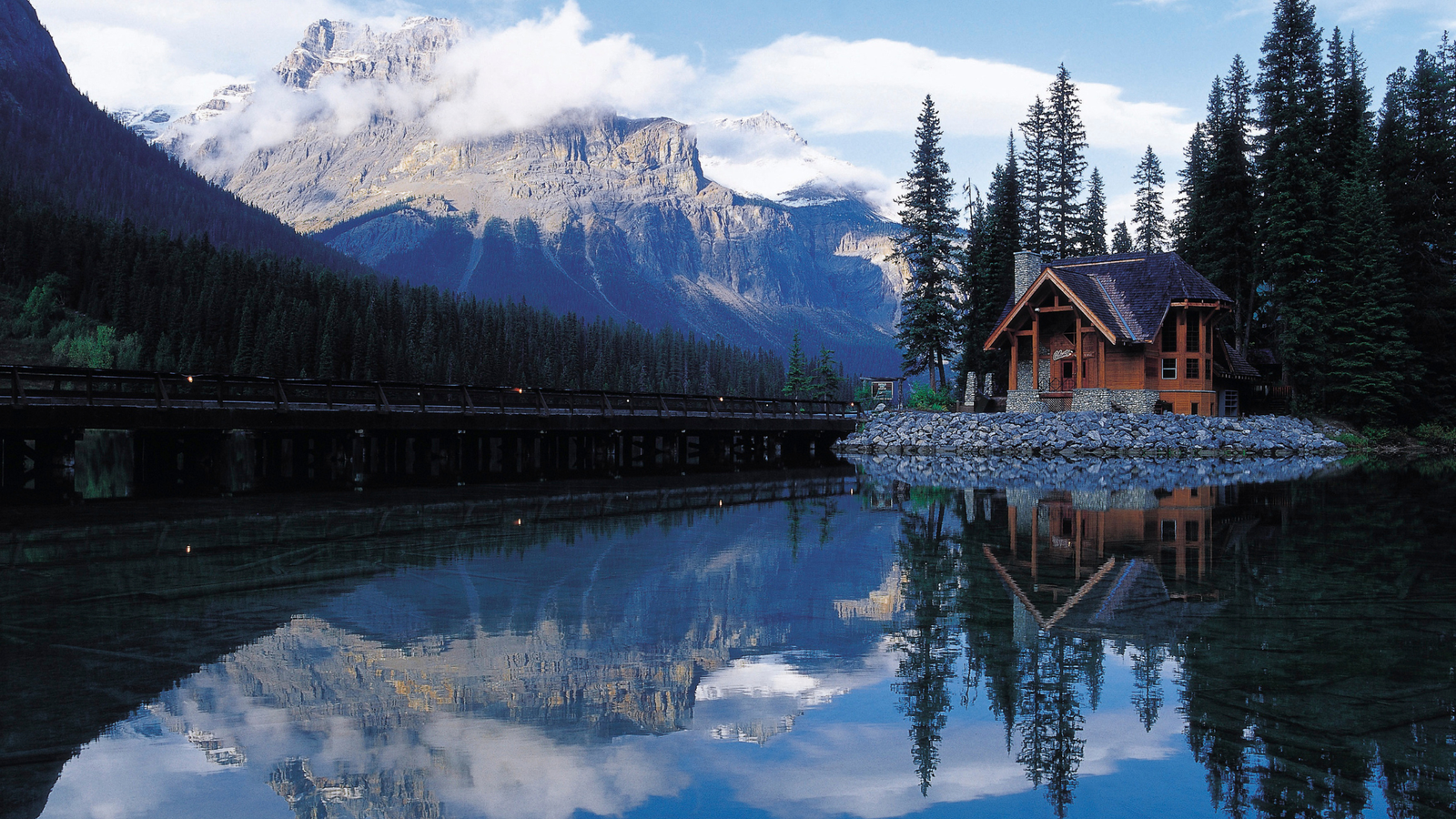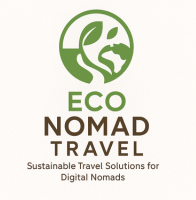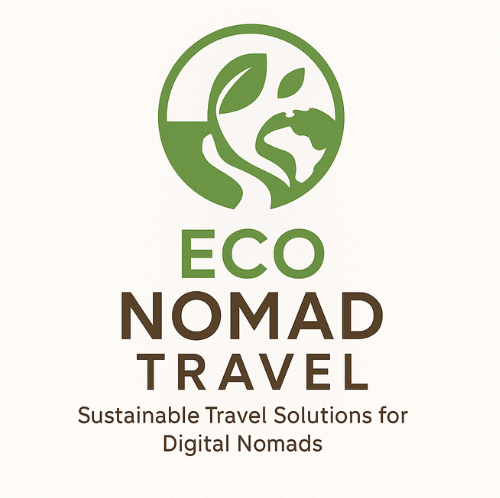Some results use affiliate links. Eco Nomad Travel may earn a small commission at no extra cost to you.
Partners include Trip.com, Aviasales, Airalo, and more.
Quietcations and Digital Detox: Remote Retreats for Nomads Seeking Silence (2025)
In an always-on world, quiet is the new luxury. Digital nomads and slow travelers are turning toward remote retreats where silence, sustainability, and focus replace Wi-Fi overload. Here’s how 2025 is shaping the rise of the quietcation.

Affiliate Disclosure: This article contains affiliate links. If you purchase through them, Eco Nomad Travel may earn a small commission — at no extra cost to you. We only promote travel partners aligned with sustainable, low-impact exploration.
The Rise of Quietcations in 2025
“Quietcation” — once a niche travel term — has become a defining movement for wellness-oriented digital nomads. As cities grow noisier and screens demand every waking second, travelers are seeking remote escapes where silence is intentional, not accidental. In 2025, searches for digital detox retreats and off-grid cabins have doubled compared to 2023, signaling that tranquility has become a commodity of its own.
These destinations offer more than silence: they encourage sustainable living, slower travel, and deeper connection with nature. Many of them operate on renewable energy, provide plant-based meals, and practice zero-waste hospitality — perfect for the conscious traveler who values purpose over pace.
Why Digital Detox Travel Matters Now
Constant connectivity has become both our greatest tool and our quietest trap. The average digital nomad spends over eight hours per day online — toggling between freelance projects, Slack messages, and social media. It’s no wonder many experience dopamine fatigue and attention burnout.
Quietcations aren’t anti-technology; they’re about re-framing our relationship with it. Instead of checking out entirely, travelers learn to check in — to their surroundings, senses, and mental state. That’s why many eco-lodges now integrate digital-wellness workshops alongside forest bathing and mindful hiking sessions.
The Science of Silence and the Overstimulated Brain
Studies from the University of Helsinki and Stanford show that quiet environments reduce cortisol levels and enhance the brain’s default mode network — responsible for creativity and reflection. Just two days in nature without digital stimulation can improve cognitive performance by up to 50 %.
In essence, silence doesn’t just calm; it rewires. When dopamine pathways aren’t bombarded by notifications, the brain resets its reward system. That’s why digital detox travel is increasingly seen as mental sustainability — the missing piece in the wellness ecosystem.
What Defines a True Quietcation
Intentional Disconnection
A quietcation isn’t a staycation with fewer notifications. It’s a deliberate act of tuning out digital noise to tune into natural rhythm. The most transformative retreats enforce tech-free hours, providing analog tools like journals and sketchpads instead of screens.
Eco-Minimalist Comfort
Luxury on a quietcation means minimalism with meaning. Think solar-powered cabins, biodegradable toiletries, and linen sheets washed in mountain spring water. If you’re booking, use Trip.com filters for “eco-certified stays” to ensure your retreat supports local sustainability efforts.
Local Immersion
True peace often lives far from Wi-Fi. Remote villages in Slovenia, Laos, or Patagonia host silent homestays where travelers share chores and meals with locals — exchanging conversation for community. This blend of stillness and shared humanity defines the quietcation ethos.
Global Destinations for Mindful Disconnection
Europe: Nordic Silence & Alpine Solitude
Finland leads the quietcation movement with “Silence Villages” where even restaurants limit background music. In the Swiss Alps, car-free valleys offer chalets reachable only by foot or e-bike — perfect for train-based travelers reducing flight emissions.
Asia: Mindful Retreats and Forest Monasteries
Japan’s Koyasan mountain temples and Bali’s silent wellness lodges offer guided tech-fast programs where guests surrender devices at check-in. Pair your trip with Yesim eSIM or Airalo to stay reachable only when needed — no roaming chaos.
Latin America: Jungle Stillness & Oceanic Clarity
From Costa Rica’s Osa Peninsula eco-lodges to Chilean Patagonia’s off-grid domes, Latin America blends biodiversity with quiet luxury. Many retreats collaborate with indigenous communities for authentic, regenerative experiences aligned with eco-nomad ethics.
How Nomads Are Redefining Productivity Through Silence
Productivity isn’t measured by screen time anymore — it’s measured by focus depth. Quietcations give digital nomads a space to step back, recalibrate goals, and return sharper. A 2025 NomadList survey found that remote workers who take a week-long digital detox report 35 % higher long-term productivity and 60 % improved sleep quality.
These retreats align perfectly with sustainable nomad living — balancing wellness, environmental care, and mental recharge. Some even integrate coworking gardens or analog brainstorming corners for creative bursts between forest walks.
Planning Your Quietcation Sustainably
Travel Mindfully
Skip short-haul flights and opt for scenic night trains or electric shuttles using Aviasales and Kiwitaxi. You’ll cut emissions while watching landscapes shift in real time — an underrated meditation.
Pack Light, Live Lighter
Follow our Zero-Waste Digital Nomad Packing Guide to avoid cluttering your retreat with gadgets. Bring a refillable water filter bottle, biodegradable soap, and a single offline notebook.
Time It Right
Off-season months bring both quiet and affordability. Our Off-Peak Eco Escapes Europe 2025 guide lists low-crowd destinations perfect for meditation, stargazing, and creative rest.
Eco-Tech & eSIMs for Mindful Travelers
Even disconnection benefits from smart preparation. Using an eSIM like Airalo or Yesim lets you toggle data on only when necessary — no SIM swaps, no airport chaos. You can pre-download maps, translation packs, and trail guides, then shut data off for days while still feeling secure.
Meanwhile, apps like “Forest” or “Offtime” reinforce mindfulness habits. Combine these with Trip.com eco-lodging filters to book sustainable stays powered by solar or hydro energy. Minimal connection, maximal intention.
Plan Your 2025 Quietcation with Sustainable Tools
Start your digital detox journey — book eco-lodges and secure flexible connectivity for the road ahead.
Find Eco-Friendly Retreats on Trip.com Stay Connected Mindfully with Airalo eSIMTransportation Without Noise
Quiet travel begins long before arrival. Swap airports for scenic journeys — trains, ferries, or EV transfers that let landscapes unfold slowly. Services like Kiwitaxi and Welcome Pickups make door-to-door transfers effortless while supporting low-emission fleets. For longer routes, browse night-train itineraries via our European Sleeper Guide.
Each kilometer you travel consciously reinforces the ethos of the quietcation — movement measured not in speed, but in stillness.
Sustainable Stays that Protect the Peace
The best quietcations are hosted by places that whisper with integrity. Search for eco-certified lodges through Trip.com or learn how to vet accommodations using our Greenwashing Checklist 2025.
Look for renewable-energy systems, plastic-free kitchens, and waste-to-compost initiatives. Many alpine chalets and island retreats now include “sound zones” — shared community spaces balanced with silent hours for meditation or reading.
Budgeting, Work Balance & Realistic Expectations
A digital detox doesn’t mean abandoning income — it means restructuring workflow. Many travelers schedule async check-ins before departure, download project files offline, and alert clients to a focus week.
Quietcations often cost less than city stays: lower entertainment spend, simpler meals, and reduced transport emissions. Combine flight comparison via Aviasales with local EV rentals from GetRentACar to cut both cost and carbon.
The Neuroscience Behind Quietcations and Digital Detox (2025)
Modern neuroscience confirms what monks and minimalists have long known — silence rewires the brain. When external noise drops, the brain’s default mode network becomes active, enabling introspection and creativity. Studies on alpha and theta brainwaves show measurable increases during digital detox retreats, correlating with improved focus, empathy, and long-term memory formation.
Quietcations in 2025 are no longer framed as luxury escapes but as neural resets. Digital overuse triggers dopamine fatigue and decision overload, reducing emotional regulation. By stepping into a structured silent environment — a lakeside cabin, a forest hut, or a mountain monastery — travelers enter a sensory fast that restores executive functioning and emotional clarity.
Many of these retreats integrate mindfulness, slow breathing, or forest therapy to amplify neuroplastic recovery. Whether you’re a remote worker or digital creator, a short retreat can lead to measurable gains in attention span, resilience, and mental flexibility. Learn more about these cognitive benefits in our guide to sustainable digital nomad living.
Future Trends: Quietcations as the New Wellness Frontier
As the global wellness economy expands beyond spas and yoga retreats, quietcations digital detox 2025 marks a turning point. Analysts predict that mindful travel and low-tech retreats will grow 15% faster than conventional tourism over the next decade. This shift mirrors broader behavioral trends — from reduced screen time to minimalist living and regenerative travel.
Destinations like Iceland, Japan, and Slovenia are pioneering “quiet zones” — regions where traffic noise, light pollution, and device use are restricted. These are complemented by programs encouraging slow work and mindful entrepreneurship. The overlap between sustainability and silence is clear: travelers who seek less noise often produce fewer emissions, choose local food, and stay longer, supporting circular economies.
In practice, this means the digital detox niche now intersects with climate-conscious tourism. Platforms like Trip.com and Aviasales increasingly tag quiet, eco-friendly accommodations as top-rated. For nomads, quietcations are no longer fringe experiments — they’re a core lifestyle upgrade aligned with health, focus, and planetary stewardship.
Practical Guide: How to Plan a Digital Detox That Actually Works
It’s easy to book a retreat — harder to truly disconnect. Begin your quietcation digital detox 2025 by setting a pre-trip intention: What mental noise are you hoping to quiet? Identify your top digital triggers — notifications, doomscrolling, or constant multitasking — and design the trip around removing them. Choose a location with weak signal rather than fighting your habits.
Pack tools that nurture presence: a physical book, an analog journal, and offline playlists. Notify your clients, automate your inbox, and delete social apps before arrival. Upon reaching your retreat, spend the first day in quiet observation. Many travelers notice phantom vibrations or mental restlessness — the detox beginning in real time.
Finally, build a re-entry plan. A successful quietcation doesn’t end when you reopen your laptop — it integrates into your workflow. Schedule micro-breaks, phone-free mornings, and low-stimulation evenings. The goal isn’t abstinence; it’s awareness. For more low-impact strategies, see our low-impact travel habits guide.
The Neuroscience Behind Quietcations and Digital Detox (2025)
Modern neuroscience confirms what monks and minimalists have long known — silence rewires the brain. When external noise drops, the brain’s default mode network becomes active, enabling introspection and creativity. Studies on alpha and theta brainwaves show measurable increases during digital detox retreats, correlating with improved focus, empathy, and long-term memory formation.
Quietcations in 2025 are no longer framed as luxury escapes but as neural resets. Digital overuse triggers dopamine fatigue and decision overload, reducing emotional regulation. By stepping into a structured silent environment — a lakeside cabin, a forest hut, or a mountain monastery — travelers enter a sensory fast that restores executive functioning and emotional clarity.
Many of these retreats integrate mindfulness, slow breathing, or forest therapy to amplify neuroplastic recovery. Whether you’re a remote worker or digital creator, a short retreat can lead to measurable gains in attention span, resilience, and mental flexibility. Learn more about these cognitive benefits in our guide to sustainable digital nomad living.
Future Trends: Quietcations as the New Wellness Frontier
As the global wellness economy expands beyond spas and yoga retreats, quietcations digital detox 2025 marks a turning point. Analysts predict that mindful travel and low-tech retreats will grow 15% faster than conventional tourism over the next decade. This shift mirrors broader behavioral trends — from reduced screen time to minimalist living and regenerative travel.
Destinations like Iceland, Japan, and Slovenia are pioneering “quiet zones” — regions where traffic noise, light pollution, and device use are restricted. These are complemented by programs encouraging slow work and mindful entrepreneurship. The overlap between sustainability and silence is clear: travelers who seek less noise often produce fewer emissions, choose local food, and stay longer, supporting circular economies.
In practice, this means the digital detox niche now intersects with climate-conscious tourism. Platforms like Trip.com and Aviasales increasingly tag quiet, eco-friendly accommodations as top-rated. For nomads, quietcations are no longer fringe experiments — they’re a core lifestyle upgrade aligned with health, focus, and planetary stewardship.
Practical Guide: How to Plan a Digital Detox That Actually Works
It’s easy to book a retreat — harder to truly disconnect. Begin your quietcation digital detox 2025 by setting a pre-trip intention: What mental noise are you hoping to quiet? Identify your top digital triggers — notifications, doomscrolling, or constant multitasking — and design the trip around removing them. Choose a location with weak signal rather than fighting your habits.
Pack tools that nurture presence: a physical book, an analog journal, and offline playlists. Notify your clients, automate your inbox, and delete social apps before arrival. Upon reaching your retreat, spend the first day in quiet observation. Many travelers notice phantom vibrations or mental restlessness — the detox beginning in real time.
Finally, build a re-entry plan. A successful quietcation doesn’t end when you reopen your laptop — it integrates into your workflow. Schedule micro-breaks, phone-free mornings, and low-stimulation evenings. The goal isn’t abstinence; it’s awareness. For more low-impact strategies, see our low-impact travel habits guide.
If you’re curious about the science of mental stillness and how screen-free habits reshape focus, our founder Jeremy Jarvis explores these ideas in his book The Power of Clarity. Published through Mind Clarity Hub, it expands on the same neuroscience of calm focus and digital detox that inspires the quietcation movement — helping readers reconnect with presence and attention in a hyper-distracted world.
Before You Go: The Power of Intentional Stillness
Every quietcation begins with a decision — to hear your own thoughts again. In 2025, silence isn’t escape; it’s strategy. Whether you choose a Nordic lake cabin, a Balinese jungle lodge, or a Patagonian dome, let each pause refill your creative capacity.
Explore more sustainable-travel resources through our guides on eco travel tips, low-impact habits, and leave-no-trace nomadism.
Frequently Asked Questions (Quietcations & Digital Detox 2025)
Planning & Preparation
1. What is a quietcation?
A quietcation is a retreat focused on silence and digital detox — designed to restore mental clarity and creative focus away from devices.
2. How long should a digital detox last?
Even three days can reset dopamine levels and sleep rhythms. A week offers deeper neural recovery.
3. Are quietcations suitable for remote workers?
Yes — many retreats offer tech-free blocks mixed with designated check-in periods for work balance.
4. What destinations are best for quietcations in 2025?
Finland, Slovenia, Bali, and Costa Rica lead the trend with eco-lodges in remote natural settings.
5. Do quiet retreats have Wi-Fi?
Some offer limited or timed access to encourage mindful connection instead of constant scrolling.
6. How do I stay safe while disconnected?
Use an eSIM like Airalo to keep emergency data on standby without social notifications.
7. What should I pack for a digital detox?
Notebook, offline maps, natural fabrics, and reusable essentials — see our Zero-Waste Packing List 2025.
Destinations & Experiences
8. Are quietcations affordable?
Yes. Many cost less than urban trips thanks to minimal transport and simple meals.
9. How do quietcations help mental health?
Silence lowers cortisol and improves the brain’s default-mode network for reflection and creativity.
10. Is solo travel safe for these retreats?
Absolutely — many quiet lodges specialize in solo-friendly eco-accommodation and community dinners.
11. How do I book an eco-certified stay?
Use Trip.com filters for “eco-certified” or “sustainable” properties.
12. What activities replace screen time?
Nature walks, journaling, forest bathing, and community gardening are common offerings.
13. Can I travel to these spots without flying?
Yes — Europe’s rail network and ferry systems make low-carbon access easy. See our Train vs Plane Guide 2025.
14. Are quietcations eco-friendly?
Most are — they limit resource use and prioritize local communities and regenerative design.
15. What time of year is best?
Off-season months like May or October offer quiet rates and temperate weather.
Practical Travel & Lifestyle Tips
16. Can couples or families go on quietcations?
Yes — many retreats offer private family cabins with quiet hours for all ages.
17. Are there urban quietcations?
Major cities like Tokyo and Copenhagen now offer sound-proofed micro-stays and mindfulness pods.
18. How does a quietcation reduce my carbon footprint?
Longer, slower stays mean fewer flights and more local spending per emission unit.
19. Can I volunteer while on retreat?
Yes — eco-lodges often offer conservation or reforestation projects for guests.
20. Where can I learn more about eco-nomad living?
Browse our Sustainable Travel Guide 2025 for practical eco-nomad resources and tools.
Explore More Eco Nomad Travel Guides
Continue your mindful travel journey with more guides on sustainable digital nomadism, low-impact habits, and slow exploration.
🌿 Explore all guides on EcoNomadTravel.com

Eco Nomad Discovery Hub
Explore a greener way to travel — from eco stays and low-impact transport to digital tools that help you stay connected sustainably.
Affiliate Disclosure: This travel hub includes affiliate links. Purchases made through these links may earn a small commission at no cost to you.
Supported by Trip.com and Travelpayouts partners.

